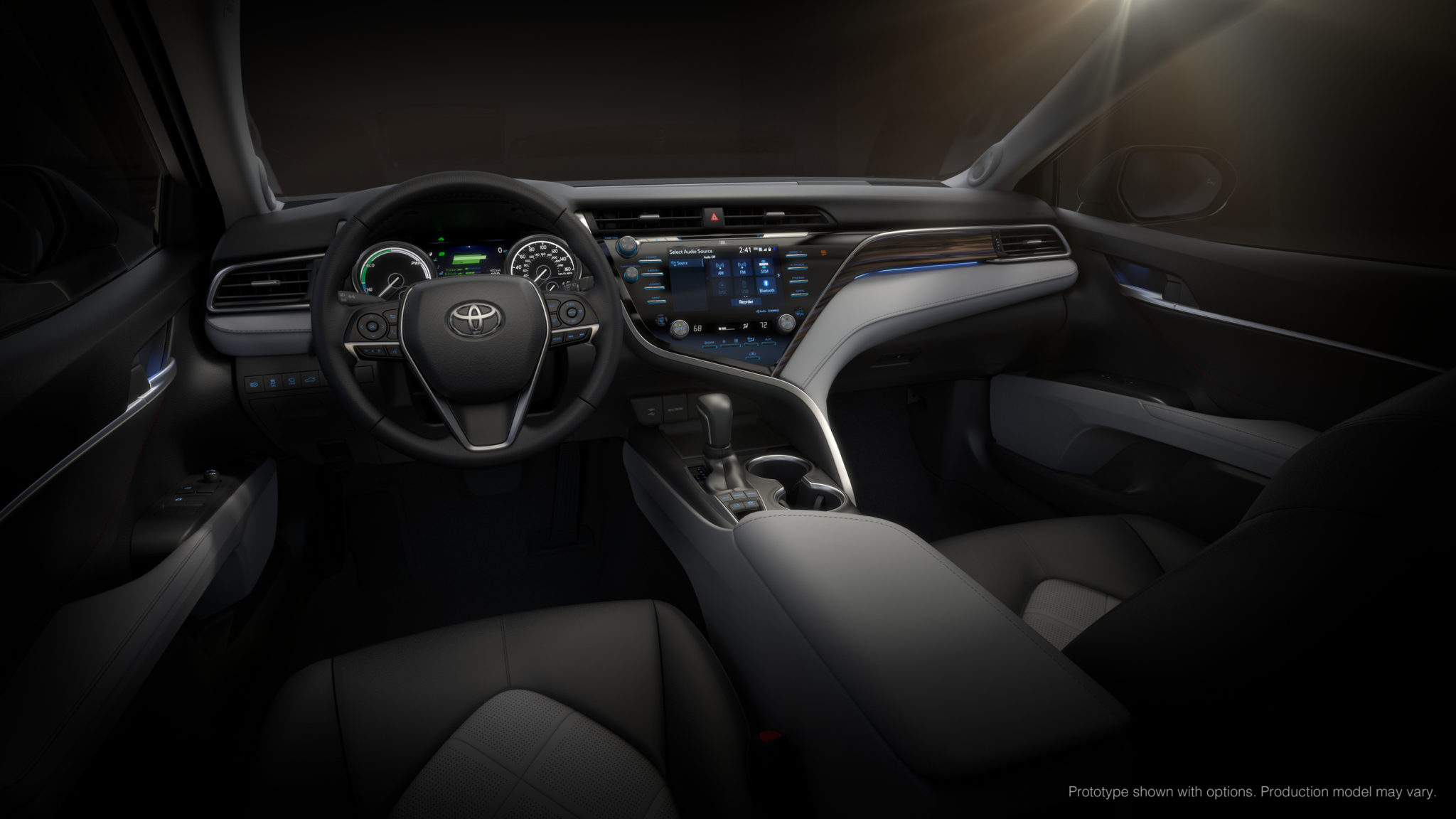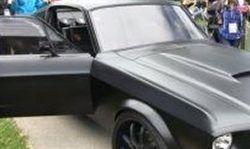 Toyota is putting Linux in its cars[/caption] Car manufacturers prefer proprietary experiences to platforms when it comes to in-car ‘infotainment’ technology. The influx of self-driving technology was supposed to change that, but Toyota is resisting the movement with Linux. Starting with the 2018 Camry, Toyota will utilize “Automotive Grade Linux” (AGL). Described as “a collaborative cross-industry effort developing an open platform for the connected car,” AGL boasts of over 100 members for its open source platform. The aim with AGL is to have reused code across manufacturers’ infotainment systems so developers can write apps for use in cars everywhere. Post-Camry, the AGL-based system will roll out to “most” Toyota and Lexus vehicles in North America. There was no announcement of a worldwide launch for this new system. Dan Cauchy, Executive Director of Automotive Grade Linux, says Toyota “is an early adopter of Linux and open source and has been an active member and contributor to AGL for several years.” “The flexibility of the AGL platform allows us to quickly roll-out Toyota’s infotainment system across our vehicle line-up, providing customers with greater connectivity and new functionalities at a pace that is more consistent with consumer technology,” says Toyota Executive Vice President, Connected Company, Keiji Yamamoto. “Adopting an open source development approach has enabled us to focus resources on developing innovative new features and bringing them to market faster.” The “pace” Yamamoto is referring to is likely some low-key shade at the industry at large, where the in-car experience is desperately behind the larger tech industry curve. As we drift into a time where smartphones are computers in our pocket, our cars feel lacking. It’s that pace that served as the precursor for Android Auto and CarPlay, which some auto manufacturers are adopting in lieu of forging their own path forward. The issue with CarPlay and Android Auto is that they don’t handle all of your car’s settings and features. Neither can debug a fussy ‘check engine’ light, and we’re still far from self-driving ubiquity. Apple’s own self-driving initiatives may change some of that, but it would still require a car manufacturer to turn over the entire stack to Apple, Google or another partner. Toyota, at least, is unwilling to do that. Let’s just hope AGL is a better initiative than Linux for the desktop, which still hasn’t reached its potential. Image Credit: Toyota
Toyota is putting Linux in its cars[/caption] Car manufacturers prefer proprietary experiences to platforms when it comes to in-car ‘infotainment’ technology. The influx of self-driving technology was supposed to change that, but Toyota is resisting the movement with Linux. Starting with the 2018 Camry, Toyota will utilize “Automotive Grade Linux” (AGL). Described as “a collaborative cross-industry effort developing an open platform for the connected car,” AGL boasts of over 100 members for its open source platform. The aim with AGL is to have reused code across manufacturers’ infotainment systems so developers can write apps for use in cars everywhere. Post-Camry, the AGL-based system will roll out to “most” Toyota and Lexus vehicles in North America. There was no announcement of a worldwide launch for this new system. Dan Cauchy, Executive Director of Automotive Grade Linux, says Toyota “is an early adopter of Linux and open source and has been an active member and contributor to AGL for several years.” “The flexibility of the AGL platform allows us to quickly roll-out Toyota’s infotainment system across our vehicle line-up, providing customers with greater connectivity and new functionalities at a pace that is more consistent with consumer technology,” says Toyota Executive Vice President, Connected Company, Keiji Yamamoto. “Adopting an open source development approach has enabled us to focus resources on developing innovative new features and bringing them to market faster.” The “pace” Yamamoto is referring to is likely some low-key shade at the industry at large, where the in-car experience is desperately behind the larger tech industry curve. As we drift into a time where smartphones are computers in our pocket, our cars feel lacking. It’s that pace that served as the precursor for Android Auto and CarPlay, which some auto manufacturers are adopting in lieu of forging their own path forward. The issue with CarPlay and Android Auto is that they don’t handle all of your car’s settings and features. Neither can debug a fussy ‘check engine’ light, and we’re still far from self-driving ubiquity. Apple’s own self-driving initiatives may change some of that, but it would still require a car manufacturer to turn over the entire stack to Apple, Google or another partner. Toyota, at least, is unwilling to do that. Let’s just hope AGL is a better initiative than Linux for the desktop, which still hasn’t reached its potential. Image Credit: Toyota Toyota Leans On Linux for Future In-Car Tech
[caption id="attachment_141969" align="aligncenter" width="2500"]  Toyota is putting Linux in its cars[/caption] Car manufacturers prefer proprietary experiences to platforms when it comes to in-car ‘infotainment’ technology. The influx of self-driving technology was supposed to change that, but Toyota is resisting the movement with Linux. Starting with the 2018 Camry, Toyota will utilize “Automotive Grade Linux” (AGL). Described as “a collaborative cross-industry effort developing an open platform for the connected car,” AGL boasts of over 100 members for its open source platform. The aim with AGL is to have reused code across manufacturers’ infotainment systems so developers can write apps for use in cars everywhere. Post-Camry, the AGL-based system will roll out to “most” Toyota and Lexus vehicles in North America. There was no announcement of a worldwide launch for this new system. Dan Cauchy, Executive Director of Automotive Grade Linux, says Toyota “is an early adopter of Linux and open source and has been an active member and contributor to AGL for several years.” “The flexibility of the AGL platform allows us to quickly roll-out Toyota’s infotainment system across our vehicle line-up, providing customers with greater connectivity and new functionalities at a pace that is more consistent with consumer technology,” says Toyota Executive Vice President, Connected Company, Keiji Yamamoto. “Adopting an open source development approach has enabled us to focus resources on developing innovative new features and bringing them to market faster.” The “pace” Yamamoto is referring to is likely some low-key shade at the industry at large, where the in-car experience is desperately behind the larger tech industry curve. As we drift into a time where smartphones are computers in our pocket, our cars feel lacking. It’s that pace that served as the precursor for Android Auto and CarPlay, which some auto manufacturers are adopting in lieu of forging their own path forward. The issue with CarPlay and Android Auto is that they don’t handle all of your car’s settings and features. Neither can debug a fussy ‘check engine’ light, and we’re still far from self-driving ubiquity. Apple’s own self-driving initiatives may change some of that, but it would still require a car manufacturer to turn over the entire stack to Apple, Google or another partner. Toyota, at least, is unwilling to do that. Let’s just hope AGL is a better initiative than Linux for the desktop, which still hasn’t reached its potential. Image Credit: Toyota
Toyota is putting Linux in its cars[/caption] Car manufacturers prefer proprietary experiences to platforms when it comes to in-car ‘infotainment’ technology. The influx of self-driving technology was supposed to change that, but Toyota is resisting the movement with Linux. Starting with the 2018 Camry, Toyota will utilize “Automotive Grade Linux” (AGL). Described as “a collaborative cross-industry effort developing an open platform for the connected car,” AGL boasts of over 100 members for its open source platform. The aim with AGL is to have reused code across manufacturers’ infotainment systems so developers can write apps for use in cars everywhere. Post-Camry, the AGL-based system will roll out to “most” Toyota and Lexus vehicles in North America. There was no announcement of a worldwide launch for this new system. Dan Cauchy, Executive Director of Automotive Grade Linux, says Toyota “is an early adopter of Linux and open source and has been an active member and contributor to AGL for several years.” “The flexibility of the AGL platform allows us to quickly roll-out Toyota’s infotainment system across our vehicle line-up, providing customers with greater connectivity and new functionalities at a pace that is more consistent with consumer technology,” says Toyota Executive Vice President, Connected Company, Keiji Yamamoto. “Adopting an open source development approach has enabled us to focus resources on developing innovative new features and bringing them to market faster.” The “pace” Yamamoto is referring to is likely some low-key shade at the industry at large, where the in-car experience is desperately behind the larger tech industry curve. As we drift into a time where smartphones are computers in our pocket, our cars feel lacking. It’s that pace that served as the precursor for Android Auto and CarPlay, which some auto manufacturers are adopting in lieu of forging their own path forward. The issue with CarPlay and Android Auto is that they don’t handle all of your car’s settings and features. Neither can debug a fussy ‘check engine’ light, and we’re still far from self-driving ubiquity. Apple’s own self-driving initiatives may change some of that, but it would still require a car manufacturer to turn over the entire stack to Apple, Google or another partner. Toyota, at least, is unwilling to do that. Let’s just hope AGL is a better initiative than Linux for the desktop, which still hasn’t reached its potential. Image Credit: Toyota
 Toyota is putting Linux in its cars[/caption] Car manufacturers prefer proprietary experiences to platforms when it comes to in-car ‘infotainment’ technology. The influx of self-driving technology was supposed to change that, but Toyota is resisting the movement with Linux. Starting with the 2018 Camry, Toyota will utilize “Automotive Grade Linux” (AGL). Described as “a collaborative cross-industry effort developing an open platform for the connected car,” AGL boasts of over 100 members for its open source platform. The aim with AGL is to have reused code across manufacturers’ infotainment systems so developers can write apps for use in cars everywhere. Post-Camry, the AGL-based system will roll out to “most” Toyota and Lexus vehicles in North America. There was no announcement of a worldwide launch for this new system. Dan Cauchy, Executive Director of Automotive Grade Linux, says Toyota “is an early adopter of Linux and open source and has been an active member and contributor to AGL for several years.” “The flexibility of the AGL platform allows us to quickly roll-out Toyota’s infotainment system across our vehicle line-up, providing customers with greater connectivity and new functionalities at a pace that is more consistent with consumer technology,” says Toyota Executive Vice President, Connected Company, Keiji Yamamoto. “Adopting an open source development approach has enabled us to focus resources on developing innovative new features and bringing them to market faster.” The “pace” Yamamoto is referring to is likely some low-key shade at the industry at large, where the in-car experience is desperately behind the larger tech industry curve. As we drift into a time where smartphones are computers in our pocket, our cars feel lacking. It’s that pace that served as the precursor for Android Auto and CarPlay, which some auto manufacturers are adopting in lieu of forging their own path forward. The issue with CarPlay and Android Auto is that they don’t handle all of your car’s settings and features. Neither can debug a fussy ‘check engine’ light, and we’re still far from self-driving ubiquity. Apple’s own self-driving initiatives may change some of that, but it would still require a car manufacturer to turn over the entire stack to Apple, Google or another partner. Toyota, at least, is unwilling to do that. Let’s just hope AGL is a better initiative than Linux for the desktop, which still hasn’t reached its potential. Image Credit: Toyota
Toyota is putting Linux in its cars[/caption] Car manufacturers prefer proprietary experiences to platforms when it comes to in-car ‘infotainment’ technology. The influx of self-driving technology was supposed to change that, but Toyota is resisting the movement with Linux. Starting with the 2018 Camry, Toyota will utilize “Automotive Grade Linux” (AGL). Described as “a collaborative cross-industry effort developing an open platform for the connected car,” AGL boasts of over 100 members for its open source platform. The aim with AGL is to have reused code across manufacturers’ infotainment systems so developers can write apps for use in cars everywhere. Post-Camry, the AGL-based system will roll out to “most” Toyota and Lexus vehicles in North America. There was no announcement of a worldwide launch for this new system. Dan Cauchy, Executive Director of Automotive Grade Linux, says Toyota “is an early adopter of Linux and open source and has been an active member and contributor to AGL for several years.” “The flexibility of the AGL platform allows us to quickly roll-out Toyota’s infotainment system across our vehicle line-up, providing customers with greater connectivity and new functionalities at a pace that is more consistent with consumer technology,” says Toyota Executive Vice President, Connected Company, Keiji Yamamoto. “Adopting an open source development approach has enabled us to focus resources on developing innovative new features and bringing them to market faster.” The “pace” Yamamoto is referring to is likely some low-key shade at the industry at large, where the in-car experience is desperately behind the larger tech industry curve. As we drift into a time where smartphones are computers in our pocket, our cars feel lacking. It’s that pace that served as the precursor for Android Auto and CarPlay, which some auto manufacturers are adopting in lieu of forging their own path forward. The issue with CarPlay and Android Auto is that they don’t handle all of your car’s settings and features. Neither can debug a fussy ‘check engine’ light, and we’re still far from self-driving ubiquity. Apple’s own self-driving initiatives may change some of that, but it would still require a car manufacturer to turn over the entire stack to Apple, Google or another partner. Toyota, at least, is unwilling to do that. Let’s just hope AGL is a better initiative than Linux for the desktop, which still hasn’t reached its potential. Image Credit: Toyota 

